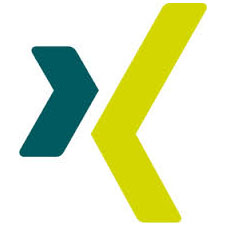Interview with Kim Charlotte Pfeffer and Laura Hüer
Senior Manager and Senior Consultant at S&P Consulting
What to consider when planning and executing virtual events
Employee meetings, industry meetings, management conferences, workshops – the coronavirus continues to prevent events like these from taking place in the usual manner. Considering the current developments, there will be no major attendance events in the coming months. However, this does not mean that events of this size will have to be completely abandoned in the future.
The experiences of the last months show that virtual events can offer great advantages, especially in a cross-regional context – provided they are well prepared. If this is the case, they are often not only clearer but also shorter and more efficient. In other words: collaboration, working on topics together, personal exchange with larger groups – all this is still possible. The coronavirus must no longer be a reason to postpone future topics. We have now arrived in the “new reality”. It is time to take the shaping of the future back into our own hands.
Especially in uncertain, dynamic times like these, the need for information and exchange is greater than ever. However, a smart approach is needed to interlink existing knowledge, so-called system intelligence, and make it usable under the changed conditions. Over the past years, S&P Consulting has been able to gain extensive experience in the use of digital technologies in the consulting process as well as in the planning and implementation of virtual events as part of blended consulting. In the following interview, you can read how we, at S&P Consulting, deal with the new situation in our customer projects.
MS. PFEFFER, AS A SENIOR MANAGER YOU HAVE ALREADY BEEN INVOLVED IN A WIDE VARIETY OF EVENTS. ESPECIALLY WHEN SWITCHING TO FULLY DIGITAL EVENTS, YOU ALSO HAD TO TAKE INTO ACCOUNT THE SITUATION AT THE CUSTOMER'S SITE. WHAT ARE THE MOST IMPORTANT DIFFERENCES BETWEEN VIRTUAL EVENTS AND FACE-TO-FACE EVENTS, ALSO IN TERMS OF PREPARATION AND IMPLEMENTATION?
Kim Charlotte Pfeffer: In our customer projects so far, we have always held events with over 150 participants on-site. For example, information events on the actual progress of change processes. Given the current situation, we are switching to completely digital formats for this type of events to be able to continue the change process as planned with regard to its content. This requires a totally different planning and organization.
With digital events, it is even more important to first take a close look at the target group: What is their level of information, their attitudes, and the degree to which they are affected by the topic of the event? How can the participants be reached, what skills do they have in using digital methods? What knowledge and skills should the event convey? Should we work towards a change of attitude? Based on this information, it is necessary to develop suitable formats and dramaturgies with which such events can be implemented to achieve the planned goals. Of course, this is also very important for analogous events. However, for digital events, this information is even more relevant. In particular, skills in the use of digital methods and the practical prerequisites have a decisive effect on the technical implementation of the dramaturgy.
“SUCCESSFUL DIGITAL EVENTS ARE NOT CHARACTERIZED BY THE USE OF THE MOST UNUSUAL AND IMPRESSIVE TOOLS – BUT BY THE SELECTION OF ADEQUATE FORMATS AND METHODS BASED ON THE NEEDS AND POSSIBILITIES OF THE AUDIENCE AND ORIENTED TOWARDS THE RESPECTIVE GOALS.“
This type of planning involves different preparation and follow-up work, as the accompanying communication also becomes more relevant to the organization. In addition, the attention span of participants is much shorter at digital events than at analog events. Especially when the camera and microphone are switched off, it is tempting to work on other topics at the same time or to reach for a smartphone. This is where digital facilitation plays a particularly important role. It is about making events more dynamic, more effective, and above all more interactive in order to achieve a real working ability of the group or to keep the attention of the participants.
Successful digital events are not characterized by the use of the most unusual and impressive tools – but by the selection of adequate formats and methods based on the needs and possibilities of the audience and oriented towards the respective goals. It is important to keep the barriers to participation as low as possible and to design the event in such a way that the desired goals can be achieved as effectively and efficiently as possible.
MS. HÜER, AS SENIOR CONSULTANT FOR STRATEGY AND HR DEVELOPMENT, YOU HAVE DEVELOPED AND ACCOMPANIED A COMPLETELY DIFFERENT EVENT FORMAT IN THE CLIENT COMPANY OVER THE LAST FEW MONTHS. HOW DID YOU EXPERIENCE YOUR FIRST PURELY DIGITAL EVENTS AND HOW DID THE FORMAT EVOLVE?
Laura Hüer:
We have had very similar experiences. However, our events have been created against a different background and with a different goal: In the course of the corona pandemic, a supra-regional, cross-organizational exchange in one of our customer systems was no longer possible within the scope of the restrictions. At the same time, there was an acute need for an exchange of experience on current developments and taken measures. As a result, a format became necessary that would also enable a productive dialog via digital channels.
The solution was digital think tanks, i.e. platforms that invite to an open discourse and support active networking. This series of events arose spontaneously from the situation and was implemented at short notice. A major challenge here was to enter into dialog without the interpersonal aspect. Informal, casual communication, such as a joint coffee before or after the meeting, is missing in digital events. Discussing with each other and only seeing each other via webcam is something different than sitting opposite each other in person. In the meantime, we are used to video conferences, but back then, all this was relatively new for our participants. Here, facilitation was required to create a trustful atmosphere for a productive exchange.
HOW HAVE YOU DEALT WITH THESE CHALLENGES AND WHERE DO YOU SEE THE GREATEST OPPORTUNITIES?
Laura Hüer:
We deliberately decided to keep the size of the groups small in order to create a personal atmosphere for discussion. In addition, the participants already exchanged their contact details during the event to continue the subsequent dialog – thus, estanblishing new networks is also possible without personal meetings, if the setting is right. Another practical aspect was that relevant experts were able to participate in the events at short notice and at low cost from anywhere. In general, this dissolution of the physical boundaries of events also makes it possible to accompany topics with virtual sequences over weeks or months – even later, when face-to-face events become possible again at some point.
Kim Charlotte Pfeffer:
At many events, we have benefited from the fact that the formats were already known as such. Our experience shows that the groups have been very responsive to the digital implementation – especially in the current situation. In addition, we were able to make the events much more interactive, the technical possibilities for digital events are enormous. With the integration of live voting, we can actively involve all participants, whether they are 100 or 800. Even requests to speak can be taken up much more easily than is the case in face-to-face events – it is easier to keep an eye on the chat than to run across the event room with a microphone. Another advantage of online events is that they can be recorded and made available digitally with little effort. This means that participants can decide for themselves when they want to view the content.
YOU SPEAK OF ENORMOUS TECHNICAL POSSIBILITIES. WERE YOU ABLE TO DRAW ON ALREADY EXISTING KNOW-HOW?
Kim Charlotte Pfeffer: We have been working with modern applications and online communication media for years and know how processes can be implemented well via online communication channels. The events are all about using appropriate methods in a targeted manner, whether it be live voting, the use of interactive tools, or programs.
Laura Hüer: We use a flexible and balanced mix of methods in our customer projects. We call this blended consulting. This means that when choosing a method, we always focus on the situation-specific needs of our client in order to achieve the desired result as efficiently and effectively as possible while saving resources. In some cases, face-to-face events are the appropriate format, in other cases it is digital solutions – while in other situations it is hybrid events. In hybrid events, some participants are personally on site and another part is mobile. In the current situation, however, digital events are usually the method of choice.
“EVERYONE WAS ABLE TO DIAL INTO THE EVENT FROM ANYWHERE – FROM THE OFFICE, FROM THE HOME OFFICE, OR WHILE TRAVELING.“
WHAT ADDITIONAL VALUE COULD THE PARTICIPANTS DERIVE FROM VIRTUAL EVENTS?
Laura Hüer: In our case, it was clearly the spontaneous and short-term implementation of the think tanks that enabled the participants to actively network during the tense crisis period and thus gather experience from different areas. We later made the digital transcripts with the jointly developed findings available to all participants, so that everyone could benefit from the discussions.
Kim Charlotte Pfeffer: In the follow-up to the events, the participants often emphasized once again how uncomplicated it is to participate in such setups. Anyone could dial into the event from anywhere – from the office, from the home office, or while traveling.
WHAT TRENDS CAN BE IDENTIFIED REGARDING VIRTUAL EVENTS?
Kim Charlotte Pfeffer: We can well imagine that hybrid events will become increasingly important in the future, not only for international companies. Through the targeted use of digital applications and tools, events – virtual or on-site – can be carried out even more effectively.
Laura Hüer:
Exactly, such a mix of a personal live event with virtual components also has many advantages. With hybrid events, we are no longer limited by physical or geographical boundaries. This opens up completely new possibilities for designing virtual events. But we also know that there are challenges that are difficult to handle over distance or online channels. Here, we are constantly working on innovative solutions.
THANK YOU VERY MUCH FOR THIS INTERVIEW!
Kim Charlotte Pfeffer
As Senior Manager, Kim Charlotte Pfeffer is responsible for the project office/project management in our customer projects. Her consulting and thematic focus includes the management of communication routines, scheduling, resource planning and the organization of (major) events. Furthermore, she accompanies strategy and organizational development processes, is involved in consulting systems, and coordinates steering teams.
Laura Hüer
Laura Hüer is a senior consultant for human resources and organizational development. She works on the conception and implementation of new organizational and leadership structures (as well as the associated communication, leadership and control routines). Her consulting and thematic focuses include the planning and implementation of strategy development and strategy review processes as well as the support of strategy implementation processes.
Blended consulting refers to the efficient design of consulting processes through the targeted use of suitable methods and media. This is not only about using digital technologies, but also about achieving the desired result with an efficient mix of methods – whether digitally or completely without technical aids.
SHORT LINK COLLECTION WITH HELPFUL TOOLS FOR THE REALIZATION OF VIRTUAL EVENTS
Besides the well-known video conferencing tools like Zoom, MS Teams or GoToMeeting and GoToWebinar or the interactive elements of the Google Suite, we find the following tools for virtual collaboration and virtual events helpful:
- Mural – Digital and interactive whiteboard for creative exchange
- Miro – Tool for digital collaboration with various digital elements for collecting ideas or for securing results
- Mentimeter & Poll-Everywhere – Software for live voting and live analysis to share and discuss the prevailing states
- Yotribe – Enables, among other things, an informal exchange even in virtual events
- Nextboards – Tool for collaboration in projects independent of location and time, which is well suited to provide materials prior to or after virtual events
PRACTICAL EXAMPLES FROM OUR CUSTOMER SYSTEMS
Depending on the situation, new requirements for events are constantly arising in our customer systems, and we tailor our concepts and formats precisely to these requirements. Below you will find project descriptions of two virtual events from the past months, which give an impression of our approach as well as the targeted planning, preparation, implementation and follow-up of virtual events.
Objective
- Short-term provision of a platform that enables a targeted and facilitated dialog on topics relevant to participants in the context of the corona pandemic
- Interlinking of perspectives, observations, expertise, and experience to deal with challenging current market changes and to secure the entrepreneurial performance
- Concretizing bottlenecks and opportunities in the market in the context of the corona pandemic to jointly develop solution ideas based on an exchange of experience and in line with the changed framework conditions
- Strengthening the communication within the group of companies
Initial situation
- An acute need for an exchange of experience on the implementation and impact of emergency measures and other relevant topics in the context of the corona pandemic and current market changes
- Limited exchange possibilities due to infection control policies
Procedure
- Development of a facilitated, interactive format for a virtual exchange of approximately two hours between a maximum of ten people
- Appointment of topic authors, who prepared and accompanied the corresponding events in terms of content, as well as the appointment of facilitators
- Schedule coordination and briefing of the persons responsible for the topic and facilitators
- Accompanying communication within the company as well as to the group
- Monitoring of the think tanks and documentation of the discussion results
- Provision of the discussion results to all participants
Results
- Implementation of 11 think tanks in the periods from May 12th – May 20th 2020 and from June 9th – June 17th 2020
- Participation of a total of 37 member companies in the first period and 43 member companies in the second period
- Intensification of communication within the group and initiation of new networks within the group
Objective
- Inform the management team about the progress of the strands of work/running projects within the change process
- Inform the management team about current challenges and problems as well as about upcoming decisions
- Promote or maintain commitment to the program
- Supporting the communication of the management towards the employees
Initial Situation
- Up to this point, implementation of this type of events generally as face-to-face events on site
- Need to transfer the familiar format to digital channels to comply with infection control policies and to guarantee employees/managers access to relevant information
Procedure
- Analysis of the target group to be informed regarding its level of information, its attitude, and how it is affected
- Determination of the event goals
- Ensure that the use or application of the (digital) tools is known
- Development of a dramaturgy for the digital implementation of the original presence format
- Elaboration and execution of the technical implementation
- Punctual provision of the documents (procedure and contents) before the event, so that the participants have the opportunity to review the contents and submit questions
- Presentation of the contents by the persons responsible for the topic, clarification of possible questions during the event (e.g. via Poll Everywhere)
- Recording and subsequent provision of the video via selected online channels, such as intranet
- Capture the sentiments regarding the progress of the program at the end of the event e.g. via Poll Everywhere or Forms survey
Results
- Informing management team about the progress of the strands of work/running projects within the change process, including answering open questions
- Provision of the recording after the event via intranet
- Results of the survey, which topics need to be deepened further
FURTHER INFORMATION
 Frédéric SedlákSenior Consultant | HR Management
Frédéric SedlákSenior Consultant | HR ManagementWe are always at your service+49 4102 69 93 22
Ask for free informationf.sedlak@spconsulting.de












